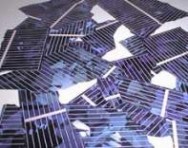
Anti-off-grid solar bailout
While grid connected homes now have a 30% tax rebate on all new solar installations in the recent Bailout Bill, off-grid homes are harder to finance. There is no cap on the size of the solar installation so wealthy grid-tied homeowners will receive the biggest subsidy.
Off-gridders do more than their fair share to reduce average energy consumption and the nation’s carbon footprint.
Gridded homeowners will also qualify for credits to help with the cost of installing top-efficiency windows, doors, roofs, heating and air-conditioning systems, and water heaters. Only certain products, the most efficient ones, will qualify. You can be sure retailers will call your attention to them, but you can research them yourself at www.energystar.gov.
For qualifying exterior doors, storm doors, metal roofs and insulation, the tax credit will be 10 percent of the cost, up to a $500 credit.
Windows, skylights and storm windows will qualify for a credit of 10 percent of the cost, with the credit capped at $200.
Central air-conditioning systems and heat pumps will qualify for $300 credits.
Top-efficiency furnaces or boilers that go beyond the government’s Energy Star standard will qualify for a $150 credit. Some super-efficient tankless or electric heat-pump water heaters will qualify for a $300 credit.
The really big-ticket investments, residential fuel cells and solar panels, allow you to generate your own electricity. They will qualify for bigger tax credits, and homeowners will have until the end of 2016 to get them installed and qualify for the tax break.
For solar water heaters (except those used for swimming pools) homeowners can get a tax credit covering 30 percent of the cost, up to $2,000. Investments in electricity-generating solar panels can garner a tax credit for 30 percent of the cost, without any cap. High-efficiency fuel cells may qualify for a credit equal to 30 percent of the cost, with a cap of $1,000 per kilowatt hour that can be produced.
Richard Deutschmann, a vice president of Chesapeake Solar in Jessup, said the typical home in the Washington area, if it has a roof facing the sunny south, uses a 3-kilowatt solar panel system that costs about $25,000 to $30,000 installed and generates about 350 kilowatt hours per month. Homes with solar panels still remain connected to the electricity grid. They can buy power from it when it’s dark or cloudy and can sell their surplus power back into the grid.
Such a system could also generate a federal tax credit in the $7,500 to $9,000 range. With the help of tax credits, the payback period — when your electricity savings have outpaced the initial investment — can be well under 10 years, Deutschmann said.
Depending on where you live and on the availability of funds, state and county programs may offer rebates, too. You can learn more about those programs at www.dsireusa.org — the Database of State Incentives for Renewables & Efficiency, which is funded by the U.S. Department of Energy.

4 Responses
Do residential OFF GRID solar PV systems qualify for the 30% federal tax credit?
I was gonna do grid tied til i found out what they want to pay you! And they are still gonna hit you with the govt fees and service charge! I dont care about their rebates or schemes,I just want to be able to call APS and tell the to get their meter out of my yard,along with thier bill!! Just got rid of the gas company what a relief!! Ill install my own thats where ill save the money.I bet you money in the bailout were probably gonna build aps a new solar plant courtesy of the tax payer just so they can turn around and charge us monthly. I WANT TO BE A FREE AERICAN AGAIN!
Personally I would say that we need to continue going toward solar and wind (and other alternative energy sources) with or without government’s help. Why wait for Big Brother, let’s just do it. I for one, refuse to wait for a government handout, probably wouldn’t take one if it were offered, things like that usually come with strings attached, strings are for puppets, I prefer being independent… just my humble opinion.
Wretha
OMGoodness! This is so wrong. I am getting ready to start a business on a large tract of land in NV and use wind/solar power to generate power for the commerical end, as well as my home. I am disappointed. Had hoped for fed/state incentive/rebates for installation and use. I hope this change.